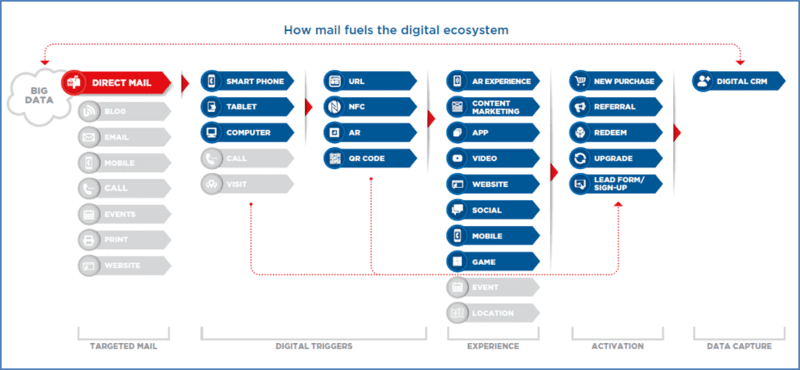‘Old School’ Mail Has Some New Tricks

Amidst all the evolutions and revolutions in political campaign tactics, mail is often at the strategic center of efforts to introduce candidates, and persuade and motivate voters.
Mail can be relied upon to help “Deliver the Win” at the federal or municipal level, for a presidential campaign or for a town council race. Even in today’s increasingly digital world, cutting edge campaign managers know that mail can be a direct and reliable channel to the voter, and anchor omni-channel campaigns that span social, mobile, broadcast, print ads, earned media, phone and in-person contact.
As noted political mail strategist Hal Malchow observed, “Technology has empowered consumers and voters to choose what advertising they see. … Mail is the only remaining advertising medium that can reach every targeted voter.”
The power of direct mail is that it places a candidate’s message directly into a voter’s hands. Mail can reach your entire electorate, since every registered voter has a mailing address. Consumers also trust mail more than any other marketing medium, according to Epsilon’s 2012 Channel Preference Study. Seventy-nine percent of households either read or scan advertising mail sent to their household. According to the Direct Marketing Association, adults 24 and younger are among the most mail-responsive groups today.
Mail is also the gateway to capturing voter attention and creating a deeper personal connection – especially in combination with digital and social strategies. Indeed, mail can be highly effective at driving voters to candidate websites and digital channels. An investment in a sleek, visually-engaging webpage or video can be multiplied with a simple note in the mail containing the link. In turn, big data collected from digital engagement can sharpen voter targeting like never before. The information collected on digital channels can ensure that your direct mail investment is going toward reaching the swing voters who can make the difference in the election.
To help turbo-charge real-time, multi-channel campaign strategies, the U.S. Postal Service is developing a political mail dashboard. This new dashboard, which will be available in the spring, can help you track and analyze each eligible mailing, provide near real-time data on mail delivered and en route, and produce valuable data from user engagement to incorporate into voter files. It could be a game-changer in terms of helping campaigns time and target mailings, and integrate all of their strategies.

Other important trends to keep an eye on include:
1) Campaigns are using QR codes and Personalized URLs to drive recipients to websites, download apps, or watch video clips. According to a 2012 Pitney Bowes survey, 38 percent of 18- to 24-year-olds have scanned a QR code in a direct mail piece. This engagement can also deliver personalized and timely data, arming campaign strategists with the information they need to refine their messages and their voter targeting.
2) Campaigns are leveraging the rich data now available from the USPS Intelligent Mail® barcode to confidently track and synchronize their direct mail with other efforts such as canvassing, radio spots, calls, Twitter events and live streaming speeches.
3) Augmented Reality (AR) transforms direct mail into an interactive multimedia experience. A candidate’s speech or a campaign website can come to life inside a voter’s home when the mail piece triggers the smart phone AR experience.
4) Mail has long allowed for efficiently targeting undecided and likely voters. But powered by big data, direct mail can now be hyper-personalized with the specific messages that could seal the deal with undecided voters, or tip the scales on turnout with a well-timed reminder.
Mail is evolving in exciting ways while still retaining its power as that anchor medium that delivers results for political campaigns. If you’re looking to be on the front edge of campaign trends and tactics, make sure you’re giving mail a fresh look.
